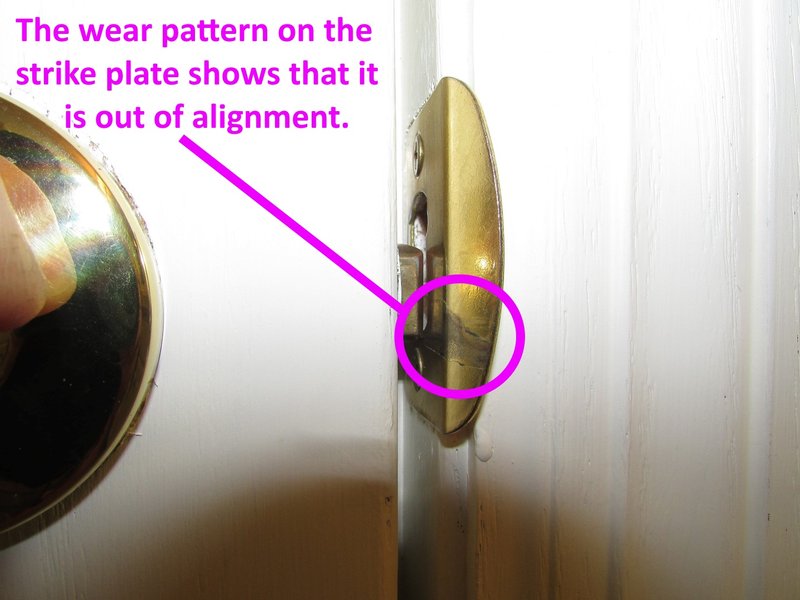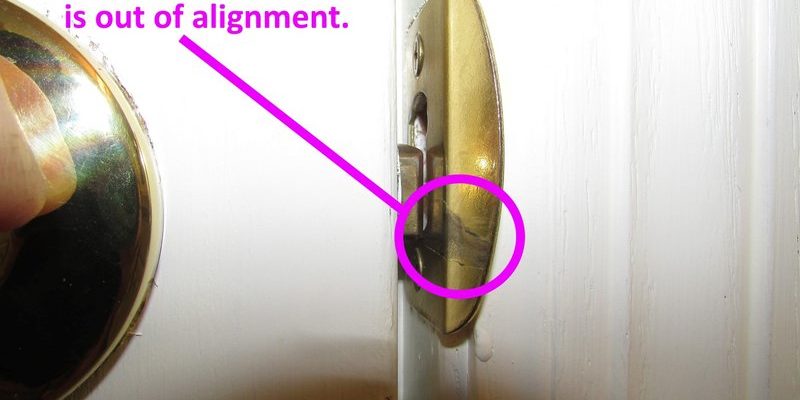
In this guide, we’ll dive into why your door latch might be scraping the strike plate and explore how to fix those pesky alignment issues. Whether it’s an old door that’s seen better days or a new door that just doesn’t seem to fit right, understanding the cause can save you both time and money. Let’s figure this out together!
Understanding the Mechanics of Door Latch and Strike Plate
When you close a door, the latch engages with the strike plate, keeping the door secured. The latch is a small metal piece that extends into the strike plate—a metal fixture on the door frame. If these two parts don’t align correctly, you’ll hear that irritating scraping sound. It’s kind of like a lock and key that just won’t work together.
Here’s the thing: a properly aligned latch and strike plate should create a smooth, silent operation every time you open or close the door. But if the latch is too high, too low, or angled incorrectly, you’ll experience that scraping sound. Factors such as settling foundations, door warping, or even seasonal changes can affect alignment, so it’s worth exploring.
Common Causes of Misalignment
Misalignment can occur for several reasons, and knowing the common culprits can help you troubleshoot the problem. Here are a few factors that may be at play:
- Wear and Tear: Over time, hinges can wear out, causing the door to sag. This is especially true if you open and close the door frequently.
- Seasonal Changes: Wood can expand and contract with temperature changes. A door that fits snugly in winter might scrape in the summer.
- Improper Installation: If the door or strike plate was not installed correctly, alignment problems are inevitable.
- Damaged Frames: Cracks or warping in the door frame can push the door out of alignment, leading to scraping.
Understanding these causes can help you diagnose whether it’s time for a quick fix or a deeper repair effort.
Checking the Alignment of Your Door Latch
Before making any adjustments, it’s important to check the alignment of your door latch and strike plate. Here’s how you can do that:
1. Close the Door: Gently close the door and listen for any scraping sounds.
2. Observe the Latch: Look at where the latch meets the strike plate. Is it centered?
3. Use a Level: If you have a level, you can check if the door is hung straight. A misaligned door will often be visibly off-kilter.
4. Check for Gaps: See if there are gaps between the door and frame that might indicate misalignment.
By carefully inspecting these elements, you can better understand the degree of misalignment you’re dealing with.
Simple Fixes for Misalignment Issues
Now that you know what’s causing the alignment issues, let’s explore some simple fixes that you can try on your own:
- Adjust the Hinges: Tightening or loosening the screws on the hinges can help realign the door. If the door is sagging, adding washers can raise the door slightly.
- Reposition the Strike Plate: If the latch is too high or low, you might need to unscrew the strike plate and reposition it. Mark where the latch meets the plate and adjust accordingly.
- Sand the Latch: If the latch is too thick, you can sand it down slightly so it fits better into the strike plate.
These adjustments are relatively straightforward and can often fix the scraping sound without involving a door professional.
More Advanced Solutions
If simple adjustments don’t work, or if the misalignment is severe, you might need some advanced solutions:
1. Replace the Hinges: Sometimes, old hinges simply can’t support the weight of the door anymore. Replacing them can give the door a fresh start.
2. Rehang the Door: If the door is consistently problematic, consider rehanging it entirely. This ensures a fresh alignment from the ground up.
3. Consult a Professional: If you’re still struggling, it might be time to reach out to a handyman or carpenter. They can quickly assess the problem and recommend a permanent fix.
These options may require more time and money but can lead to a more durable solution.
Preventing Future Misalignment
Once you’ve resolved the scraping issue, you’ll want to ensure it doesn’t happen again. Here are some preventive measures:
- Regular Maintenance: Periodically check the hinges, latch, and strike plate to ensure they’re functioning correctly.
- Monitor Temperature Changes: Be aware of how seasonal changes affect your door. In extreme weather, consider adjusting the door as needed.
- Quality Materials: If you’re replacing parts, opt for high-quality materials that can withstand wear and tear over time.
Taking these steps can save you the hassle of repeated repairs in the future.
Finding that your door latch scrapes against the strike plate can be a minor annoyance, but it’s often a signal that something needs adjusting. By understanding the mechanics behind the latch and the strike plate, you can diagnose the problem effectively. Whether it’s a simple adjustment or a more complex solution, you now have the knowledge to tackle these issues head-on.
Being proactive about maintenance and recognizing potential problems early can help you keep your doors in top shape for years to come. So, next time you hear that scraping sound, remember—you’ve got the tools and tricks to fix it!
